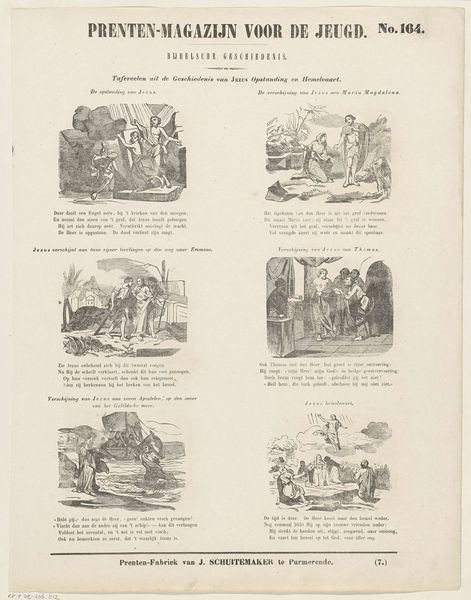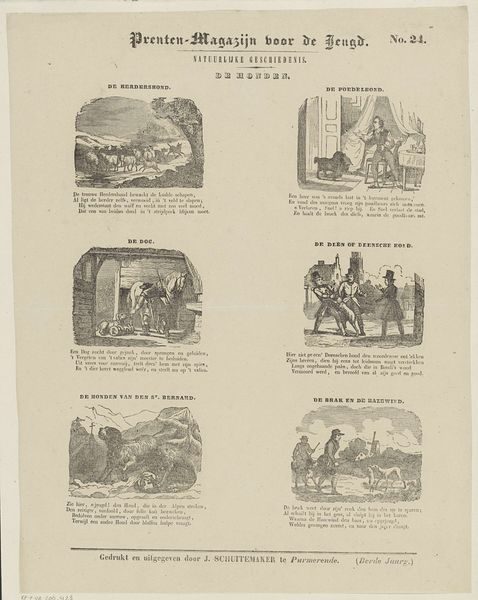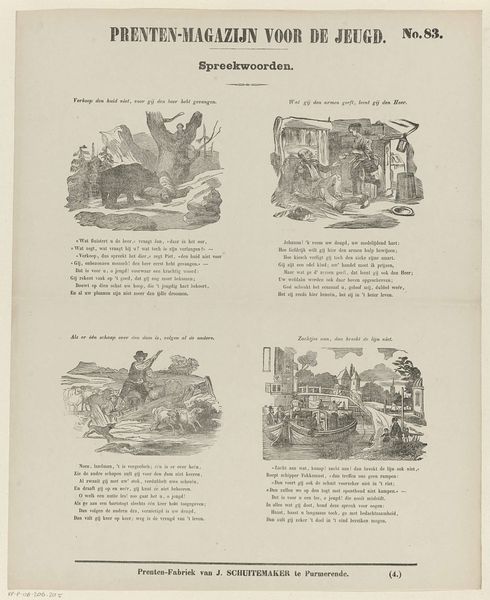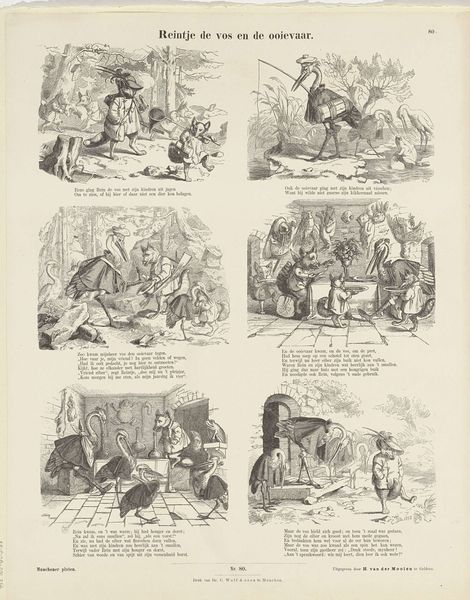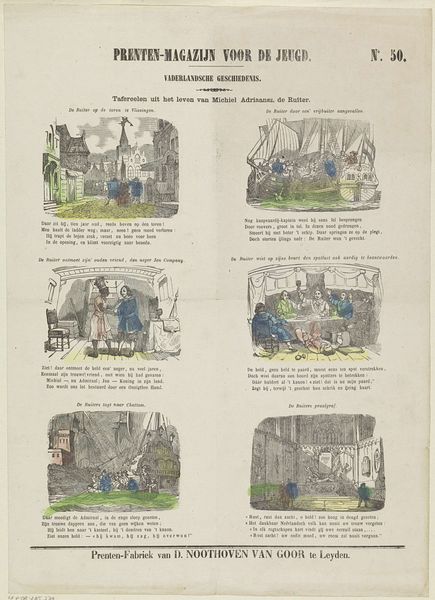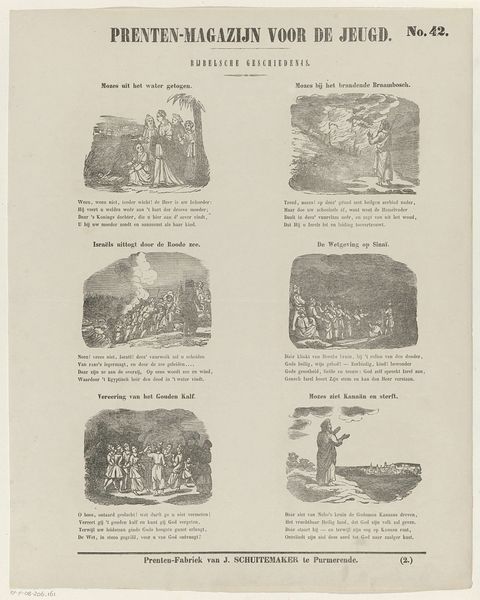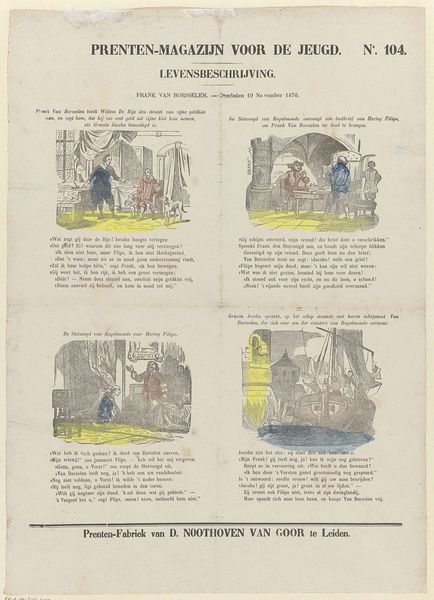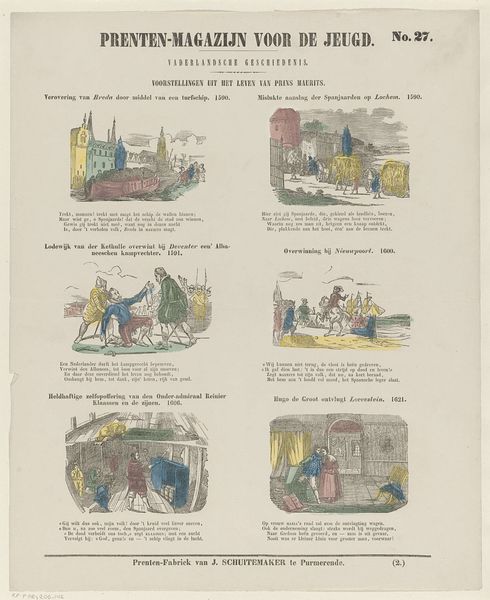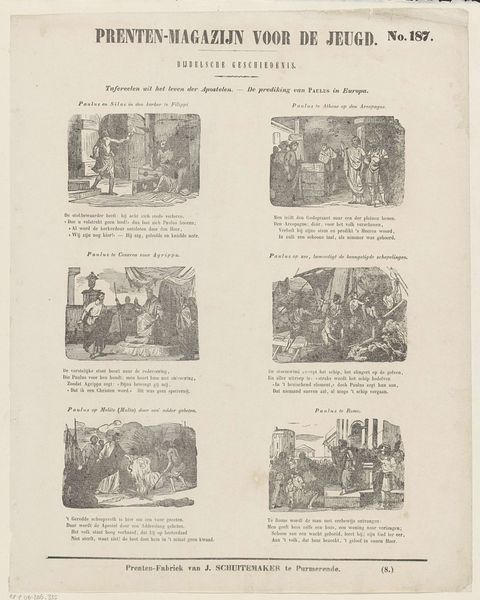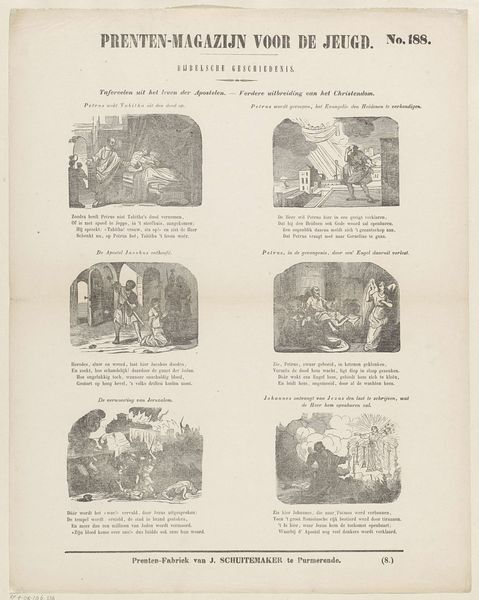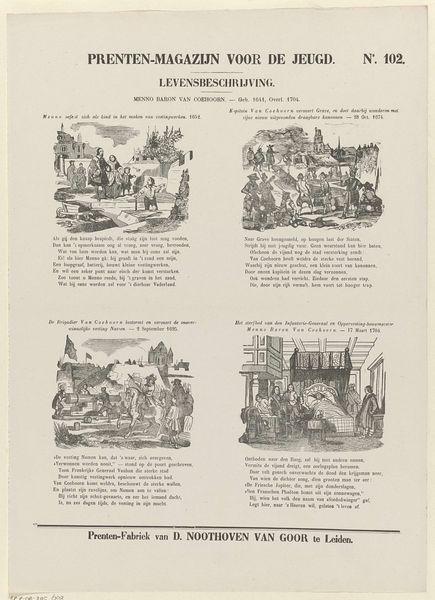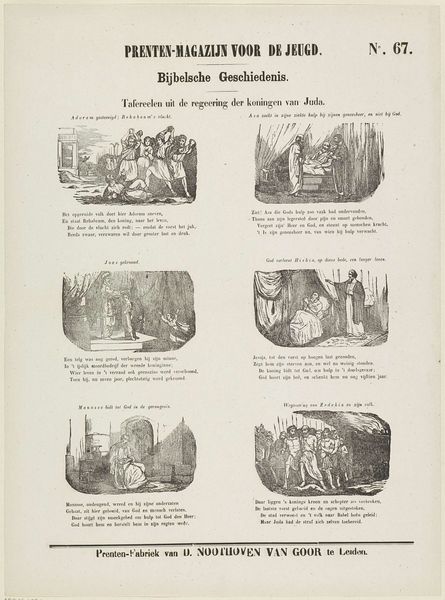
Rembrandt van Rijn. - Geb. 15 juni 1606, Overl. 19 juli 1664 1850 - 1881
0:00
0:00
print, engraving
#
portrait
#
dutch-golden-age
# print
#
landscape
#
genre-painting
#
engraving
Dimensions: height 416 mm, width 304 mm
Copyright: Rijks Museum: Open Domain
Editor: Here we have a print titled "Rembrandt van Rijn - Geb. 15 juni 1606, Overl. 19 juli 1664," dating from 1850 to 1881, published by Dirk Noothoven van Goor. It’s an engraving with four vignettes showing scenes from the artist's life. It seems like a collection of biographical moments. How do you interpret this work, considering its purpose and time? Curator: Given this appeared in a "Prenten-Magazijn voor de Jeugd" – a print magazine for youth – it seems geared toward moral instruction and the formation of national identity. It packages Rembrandt, a cultural hero, for young consumption. The vignettes probably touch upon ideas circulating about Dutch identity. Notice how it links artistic greatness to this biographical narrative: a combination of landscape, portrait and genre, seemingly designed to construct Dutch national character. Does it give you a sense of who was considered important in that era and why they might wish to memorialize him? Editor: Definitely. It's interesting how Rembrandt is presented, not just as an artist, but as a figure to emulate, a vehicle to disseminate values. Curator: Exactly. Considering its educational aim, it uses art and history to convey social expectations and desired virtues to the younger generation. It suggests an interweaving of cultural nationalism with artistic merit, probably appealing to ideas about tradition and national pride in the nineteenth century. This little magazine reflects more complex contemporary debates, from education and childhood to the meaning of "Dutch" cultural heritage. Editor: So, it is using Rembrandt's image to speak about Dutch cultural identity in the 19th century. It’s amazing to see the layers of meaning packed in a simple print. Curator: Precisely. Art is never really just *about* art. It’s always intertwined with the socio-political milieu in which it is made, consumed and remembered. I think in this instance that is clearly evidenced!
Comments
No comments
Be the first to comment and join the conversation on the ultimate creative platform.
